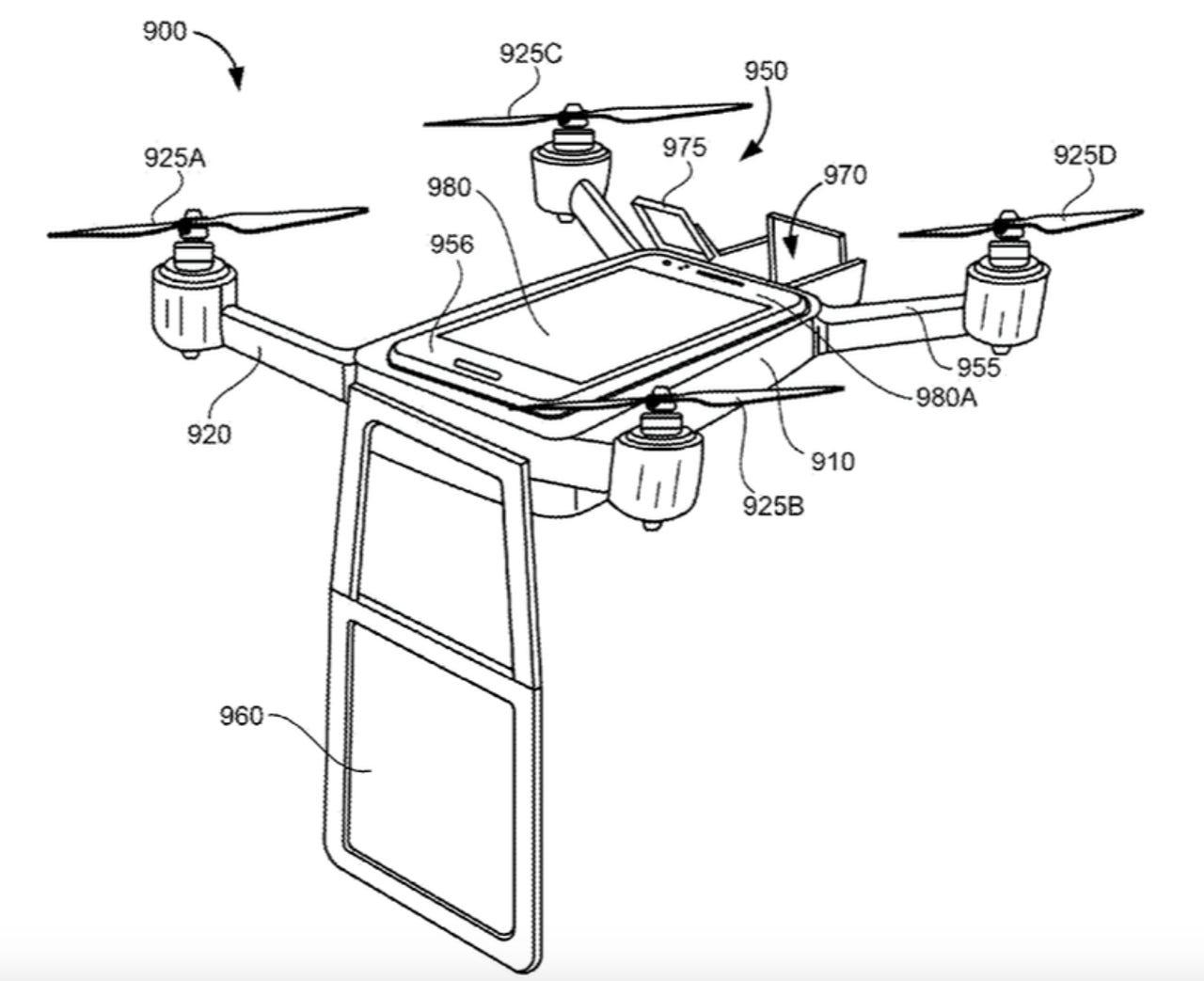Google dreams of smartphone drones hovering your presence into meetings


In one embodiment of Google's smartphone-based telepresence drone, a screen dangles off the front while a projector perches at the rear.
Many drones come with cameras, but Google thinks a drone with a projector could be the answer to mobile telepresence conferencing.
Google detailed its ideas for mobile telepresence in a patent granted this week by the US Patent and Trademark Office (USPTO) for an "unmanned aerial vehicle for collaboration".
Telepresence systems of the type sold by HP, Cisco, and Polycom may offer a more realistic virtual meeting space, but as Google notes, the right equipment needs to be at both ends, usually at a fixed location.
Google thinks it can get around this problem with the help of drones equipped with everything that a telepresence system features, including cameras, microphones, projectors, speakers, and a display.
The company notes that a remotely-controlled robot can deliver a mobile telepresence experience but argues that robots can't, for example, climb stairs: they're clumsy and energy-guzzlers.
However, its unmanned quadcopter however could provide "significant improvements" in speed, maneuverability, energy consumption, and facilitate access to cramped spaces.
For stability reasons, Google's quadcopter design is shaped like the letter H with a propeller at the ends of each of the longer strokes. In one embodiment, a screen dangles off the front end of the drone while a projector, not unlike the mini one found in Glass devices, perches at the rear of the vehicle.
Google describes the display area of the screen as being "semi-translucent" so that images projected from the rear can be viewed from the front-facing surface of the screen.
The patent doesn't go into much detail about how communications would be delivered, but notes that a docking station located on the top of the vehicle could house a smartphone, delivering processing and controls for the vehicle, as well as the audio/video capture and output.
Google outlines that "the smartphone may receive images from the user at the remote location, and may project the received images through a projector included with the smartphone".
That setup could use two mirrors where one bounces an image from the phone to a screen, and a second is used to capture an image from a room and reflect that to the camera of a smartphone.
While there aren't many phones with built-in projectors, Lenovo, which made the first Google Tango smartphone, did unveil its concept Smart Cast phone, which featured a projector. Samsung has also released two Beam phones with projectors.
Google has a number of configurations for the flying telepresence unit, including one that has no screen, but rather relies on an onboard projector to cast images onto an available wall.